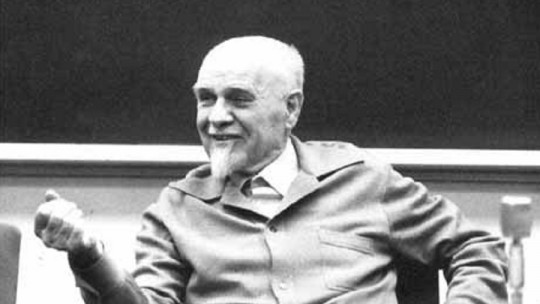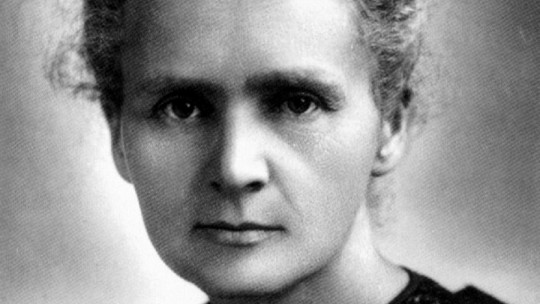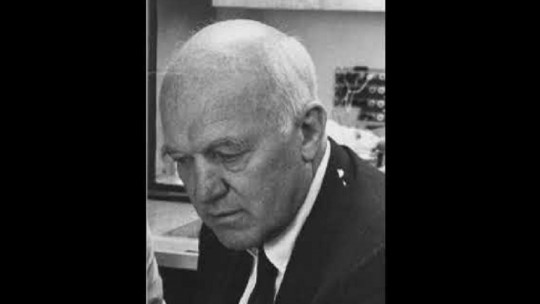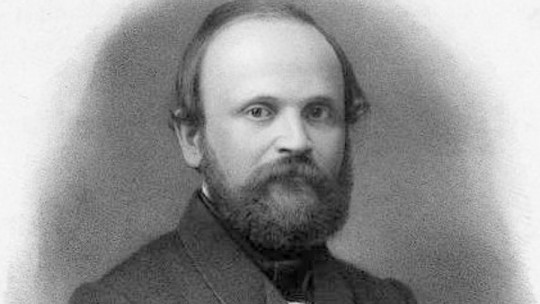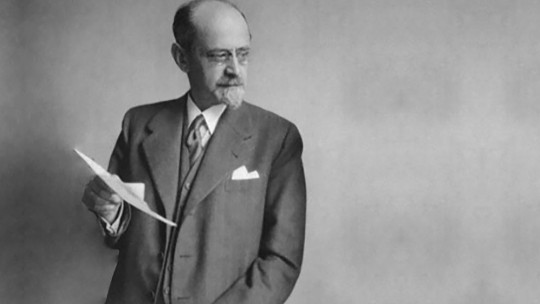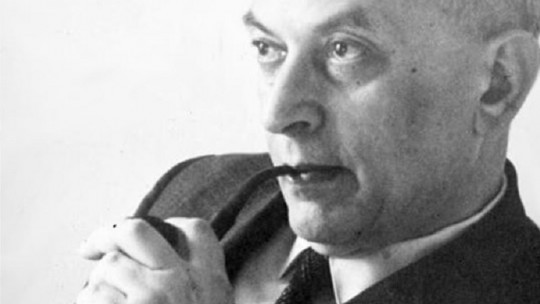Kazimierz Dąbrowski’s life, although prolific, is marked by war and censorship. However, despite this, his work has managed to leave his native Poland, cross the Iron Curtain and have the popularity it deserves.
This Polish psychologist, psychiatrist and doctor always looked for a way to continue expanding his knowledge, in addition to contributing to its dissemination by dedicating himself to teaching and giving lectures throughout Europe and North America.
His theory of positive disintegration has been seen as a true 360-degree turn when it comes to understanding how personality develops. Let’s see in more detail the life of this researcher through a biography of Kazimierz Dąbrowski in which we will also learn about his particular theory.
Kazimierz Dabrowski Biography
Although marked by some misfortunes, both personal and experienced in his native Poland, Kazimierz Dąbrowski did not stop contributing to psychology and psychiatry. His life is extremely interesting, and we are going to see it below.
Early years
Kazimierz Dąbrowski was born on September 1, 1902 in Klarów, Poland. He was the second of the four children born to a family of agricultural administrators
Already in his early childhood he had to experience the loss of a close person, his little sister, who died from meningitis at the age of three.
But not only the death of his sister marked him, since He lived through the First World War at a very young age being a town close to where he lived one of the battlefields.
At only twelve years old he was able to see with his own eyes the hundreds of corpses of soldiers killed during the war, scattered throughout the streets and places where he played.
Already at that time he was able to observe first-hand how capable humanity was of committing the most atrocious acts.
Training and professional beginnings
Dąbrowski’s academic life is characterized by being very prolific and extensive without having had direct contact with violence being an impediment to being one of the great minds of the last century.
Although he was initially educated by his family at home, he later ended up enrolling in the private Stefan Batory school in Lublin, attending the center between 1916 and 1921.
In 1921 he entered the Catholic University of Lublin, now the John Paul II University, enrolling in the Faculty of Polish Studies. There too He attended conferences on philosophy and psychology as a listener
Between 1924 and 1926 he studied philosophy at the Adam Mickiewicz University in Poznan. Later, he would study at the medical faculty of the University of Warsaw.
Later he managed to obtain the opportunity to study at the School of Educational Sciences and, later, to go to the Jean-Jacques Rousseau Institute in Geneva, Switzerland, an institution created by the neurologist Édouard Claparède. Claparède, along with Jean Piaget and Pierre Bovet, participated in Dąbrowski’s instruction during his stay in Switzerland.
In 1929 Kazimierz Dąbrowski completed his doctoral thesis at the University of Geneva on suicide titled ‘The psychopathological conditions of suicide’.
After having trained extensively while in Switzerland, upon returning to Poland Dąbrowski was responsible for founding several centers focused on the treatment of people suffering from some type of psychological disorder.
In 1931 created a clinic focused on treating neurotic patients and people with intellectual problems In 1933 he was invited by the Rockefeller Foundation to go to the United States and train at Harvard University. Then, in 1934, he returned to Poland to found the Polish League for Mental Hygiene, he being the organization’s secretary.
War and post-war times
If the First World War was already a difficult period for Kazimierz Dąbrowski, the times of the second were no better, especially if one takes into account how the Third Reich treated Poland during the conflict.
It is striking that of the nearly 400 Polish psychiatrists who were practicing before the conflict, only about 38 were still alive when the war ended. Dąbrowski suffered on a personal level, as his younger brother was murdered and his older brother was interned in a concentration camp.
However, despite the difficult times, had the opportunity to found the College of Mental Hygiene and Applied Psychology in 1942 although it was also that year that the Gestapo arrested him.
At the end of the war, and having already been liberated, Dąbrowski returned to Warsaw and became the director of the Institute of Mental Hygiene and later, in 1948, obtained the official title of psychiatrist.
Stalinist imprisonment
In 1949 the Polish government, under the guidance of Joseph Stalin in the Soviet Union, decided to close the Institute of Mental Hygiene and Kazimierz Dąbrowski was declared persona non grata.
Dąbrowski and his wife Eugenia were deprived of liberty in 1950, spending eighteen months in prison. Once released, The psychiatrist’s activities were intensely monitored by the communist authorities
After a few years working as a tuberculosis specialist, without having the right to educate or treat psychology or psychiatry, the Polish authorities considered him a ‘rehabilitated person’ and he was allowed to return to practice those fields.
In 1962 the Polish state allowed him to travel to the other side of the Iron Curtain visiting countries such as Spain, the United States, France and the United Kingdom, giving lectures on his vision of personality and the treatment of people with mental disorders.
Last two decades of life
In the 1960s, Dąbrowski traveled to the United States and was able to translate some of the research carried out by Polish colleagues into English, to ensure that the world was aware of psychiatry and psychology practiced in Poland.
It was in 1964 when his main work, Positive disintegration was published in English, becoming widely popular within the field of personality psychology.
During his stay in North America, Dąbrowski was able to meet great American psychologists and psychiatrists among them Abraham Maslow, who was interested in his theory.
Throughout the two decades of Kazimierz Dąbrowski’s life, the psychiatrist dedicated himself to teaching and writing, traveling between Canada and Poland.
Kazimierz Dąbrowski died in Warsaw, Poland, on November 26, 1980. Following his death, Polish communist authorities expropriated his widow and children’s property.
Positive disintegration theory
Kazimierz Dąbrowski’s theory of positive decay is a theory of personality development Unlike most of psychology, Dąbrowski’s view is that anxiety is a necessary factor for the correct development of an individual’s personality. This aspect, seen as something ‘disintegrative’, becomes something positive if it occurs in the appropriate way and we know how to deal with it.
In the model maintains that there are up to five levels of integration-disintegration which influence the formation of a unique personality far from the lack of individuality.
1. Level I: primary integration
At this level, people are influenced only by their biological factors, that is, heredity, along with influences from the environment.
People manifest a ‘primitive’ personality, characterized by exhibit selfish and egocentric behaviors with the sole purpose of satisfying their own desires and desires, being something typical of childhood.
2. Level II: unilevel decay
This level occurs in the event of a crisis, such as puberty and menopause , or in periods when you have to deal with a stressful event. This is where automatic dynamics become more prominent, such as greater self-awareness and self-control.
The person can rethink many things that, either due to the education received or the culture in which they live, have been taught in a way that they now question, criticizing the status quo
This, according to Dąbrowski, is the moment in which one’s own personality begins to form, which will go in one direction or another depending on how one assimilates and approaches the events in doubt from an ethical point of view.
3. Level III: spontaneous multilevel integration
After having critically considered a specific situation or fact, the person considers multiple ways to deal with them
The appearance of several alternatives makes him wonder what what just happened to him would be like if he had done it the other way he had planned.
Based on the decision you have made and the consequences that have occurred, The person will or will not develop an increasingly adapted personality but at the same time its own and unique.
4. Level IV: directed multilevel decay
At this level the person reaches absolute control of their development.
If in the previous level what was done was done in a more or less random way, in the fourth it is done deliberately, fully conscious and with well-directed intentionality towards a specific objective.
5. Level V: secondary integration
At this level, the person is already a fully stable individual , as long as you have successfully passed the four previous levels. He has become a responsible person who appropriately considers his actions.

